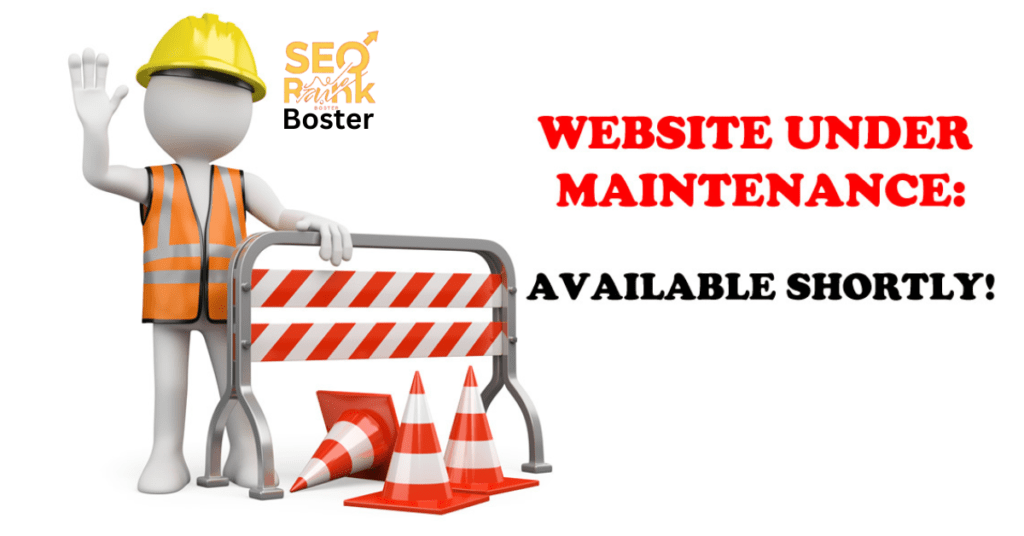Table of Contents
ToggleMaintaining your website is essential for ensuring it operates smoothly and provides the best experience for your users. But what do you do when you need to temporarily take your website offline? Learning how to shut down a website for maintenance efficiently can help minimize disruptions, maintain trust with your audience, and protect your search engine rankings. This comprehensive guide will show you how to handle maintenance downtime professionally and effectively.
Why Do Users Search for Information on Website Maintenance?
Understanding why users search for “how to shut down website for maintenance” can help address their specific needs. Common users include:
Website Administrators: Business owners or individuals managing their websites who require updates or bug fixes.
Developers: Professionals tasked with installing new features or performing technical upgrades.
SEO Specialists: Experts ensuring that site downtime doesn’t negatively impact search rankings.
E-commerce Owners: Entrepreneurs safeguarding customer data while updating their online stores.
Content Creators: Bloggers or publishers seeking to enhance site functionality and speed.
These users often look for reliable ways to handle downtime while maintaining their site’s integrity and usability.
Why Maintenance Downtime is Necessary
Scheduled maintenance downtime helps ensure your website remains functional and secure. Here are the primary reasons:
Fixing bugs or glitches that could disrupt user experience.
Updating essential software, plugins, or themes to the latest versions.
Improving security to protect against potential cyber threats.
Enhancing overall performance for faster loading times.
Implementing new features or design changes seamlessly.
Temporary downtime ensures that these critical updates are carried out in a controlled environment, minimizing risks of data loss or errors.
Key Steps to Shut Down Your Website for Maintenance
1. Notify Your Users in Advance
Communication is crucial. Inform your audience ahead of time using:
A prominent banner or popup on your website.
Email notifications for registered users or subscribers.
Social media updates to keep your followers informed.
Include details like the maintenance schedule, expected downtime, and the c can expect when your site is back online.
2. Back Up Your Website
Creating a complete backup is non-negotiable. Ensure you save:
Files: Including media, code, and configurations.
Databases: Protect vital user and site data.
Plugins and Themes: Retain your site’s customizations.
Tools like UpdraftPlus or BackupBuddy can help WordPress users perform backups effortlessly.
3. Set Up a Maintenance Page
A well-designed maintenance page keeps visitors informed and reassured. Your page should:
Explain why the site is offline.
Provide an estimated return time.
Include links to social media or contact forms for urgent inquiries.
4. Use Website Maintenance Plugins
If your website uses WordPress, specialized plugins can simplify the process. Consider these options:
WP Maintenance Mode: Offers customizable templates.
SeedProd Coming Soon & Maintenance Mode: Ideal for creating branded maintenance pages.
These tools ensure your website appears professional even during downtime.
SEO Considerations During Maintenance
To protect your SEO rankings during downtime, follow these best practices:
Implement a 503 HTTP Status Code: This informs search engines that the website is temporarily unavailable, preventing them from penalizing your site.
Optimize Your Maintenance Page: Use relevant keywords like “website maintenance” and “scheduled downtime” to maintain visibility.
Minimize Downtime: Complete updates as quickly as possible to reduce the impact on users and search engines.
Common Mistakes to Avoid
Not Informing Users: Failing to notify your audience can lead to frustration and loss of trust.
Skipping Backups: This increases the risk of permanent data loss in case of an error.
Neglecting SEO Practices: Without a 503 status code, your site could lose search engine rankings.
Prolonged Downtime: Extended outages can harm both user experience and your brand’s reputation.
Post-Maintenance Checklist
After completing your maintenance, double-check the following:
All updates have been successfully implemented.
No broken links, missing images, or errors remain.
Website speed and functionality have improved.
Security enhancements are active and verified.
Once confirmed, announce your website’s return through an email update or social media post. Highlight the updates and improvements to re-engage your audience.
FAQs
1. Why is it important to shut down a website for maintenance? Temporarily shutting down ensures updates or fixes do not interfere with your live site, protecting data and user experience.
2. What is a 503 HTTP status code? A 503 code signals to search engines that your site is temporarily unavailable and will return shortly, preserving your rankings.
3. How do I create a maintenance page? You can use plugins or manually design an HTML page with clear messaging about the downtime.
4. Will my SEO be affected during downtime? If best practices are followed, including using a 503 status code and optimized maintenance pages, the impact on SEO will be minimal.
5. How long should maintenance downtime last? Keep downtime as short as possible. The duration depends on the complexity of updates but should be minimized to reduce disruption.

